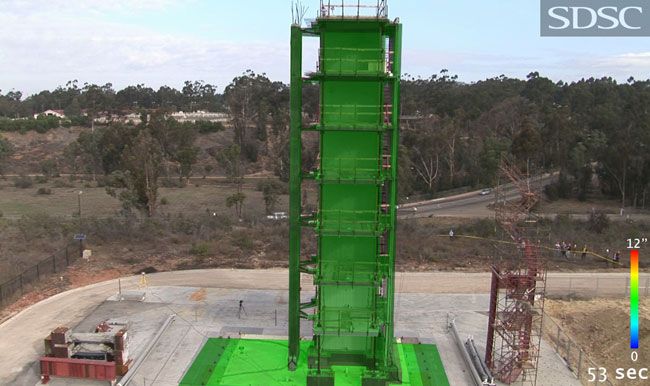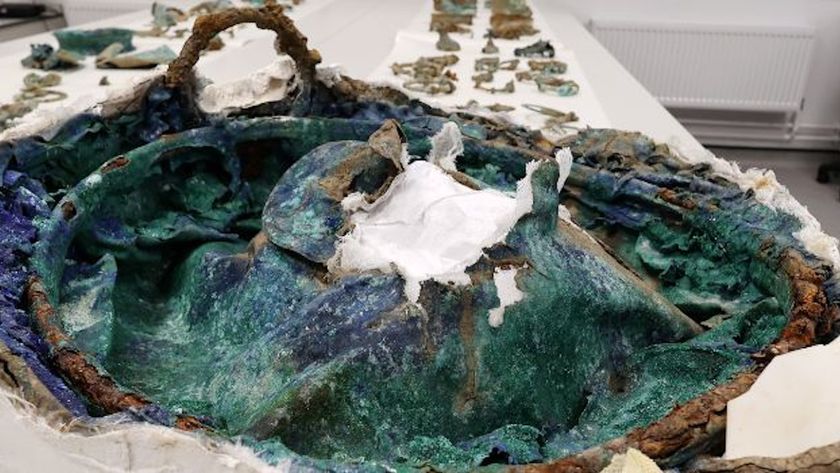Outdoor 7-Story Lab Simulates Big Earthquake

Researchers have built a seven-story, 275-ton building on the world's largest outdoor shake table and vibrated it to reproduce the motions of the powerful Northridge earthquake in California.
The Jan 17, 1994 Northridge quake, at magnitude 6.7 with an epicenter in Los Angeles' San Fernando Valley, was the costliest temblor in U.S. history and killed 72 people.
A total of 600 sensors recorded the impact on the building at the University of California, San Diego, while cameras recorded the movement, generating an immense amount of data.
- The Large High Performance Outdoor Shake Table (LHPOST), at UC San Diego, is the largest shake table in the world outside Japan, and the world's first outdoor shake table.
Researchers at the university's San Diego Supercomputer Center (SDSC) recreated the shake table experiment in a virtual environment, letting engineers view the building in perspectives ranging from the overall picture to a single structural support.
The visualization scientists not only modeled the test building, but also recreated various terrain and sky elements of the background to give a rich visual context and provide a high degree of realism. This virtual environment also allowed them to overlay the virtual image onto the recorded video footage, to directly compare the accuracy of the model.
"The recorded motion aligns very well with the movie we created," said Steve Cutchin, director of Visualization Services at SDSC. "This is important because ... you can ask, 'What if a larger 7 point earthquake hits?' and simulate how the building will shake in response."
Sound and vision sync
Sign up for the Live Science daily newsletter now
Get the world’s most fascinating discoveries delivered straight to your inbox.
The process of compositing the video and the computer animation was not without challenges.
"When we tried to composite the actual video footage, we found that the instruments had sampled the data at 50 Hz but the video was recorded at 29.97 Hz.," said SDSC visualization scientist Amit Chourasia. "And there wasn’t any timing synchronization between the building sensors and camera."
The researchers hit upon a solution when they realized that the video also recorded the sounds of the building and the shake table in motion. The scientists were able to use the audio signal to synchronize the video and instrument data for the computer animation, similar to the way a clapboard is used to sync image and sound in motion picture photography.
The Northridge earthquake served as the catalyst for more scientific evaluation of structural elements, leading to these tests at UCSD’s outdoor Englekirk Structural Engineering Center.












